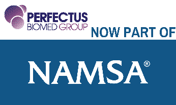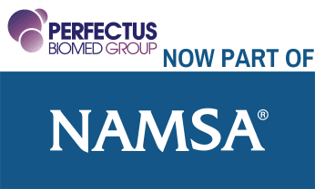MICROBIOLOGY RESEARCH
Biofilm test methods
We combine an academically-based approach with the professionalism, speed and accreditation of industry.
Perfectus Biomed work closely with our clients to understand their requirements, offering a customizable method design to suit your testing needs. We recognize the difference between generating data for regulatory, marketing and internal purposes.
Perfectus Biomed support clients with their data generation portfolio in order to support regulatory processes such as 510(k) submissions and Pre-IND applications.
Customized Microbiology
Perfectus Biomed can provide method adaptations to suit your requirements. Customized test methods are required when standard methods are not appropriate for the novel product, test methods are not available and also when internal test methods require independent validation.
Examples:
- A novel test product may be in an inappropriate state for the test method e.g. a solid state antimicrobial could not be tested as part of an assay designed for testing liquid antimicrobials.
- An assay designed for testing wound dressings may not account for the variation in dressing layers/structures and absorbencies.
- The unique selling feature of a product may not be demonstrated using standard test methodologies.
How Perfectus Biomed can help:
- Our services include extensive consultation with clients in order to ensure that we understand the microbiological question you are seeking to answer as well as the intended data use.
- We tailor our method design so that it is appropriate for the testing of your product.
- All assays include appropriate positive and negative controls and suitable repeats in order to ensure validity of the data.
- Commercial timelines
- R&D based approach
- Large library of microorganisms including WHO priorities
Microscopy Techniques
Scanning Electron Microscopy (SEM):
An electron microscope is used to investigate the structural characteristics of a range of biological and inorganic specimens, from microorganisms and cells to metals and crystals. Within microbiology, electron microscopy assesses the structure of unicellular organisms within microbial biofilms, using electron beams as their illumination source to provide high resolution images.
Scanning electron microscopy images provide visualization of material topography of a sample. They use a focused electron beam to scan a rectangular area of the specimen. Perfectus Biomed use SEMs within our biofilm testing methods, such as ISO 16954: test method for dental unit waterline biofilm treatment, to provide a visual follow-up to treatments. SEMs can be used to qualitatively assess microorganism and biofilm coverage on the surface of dental unit waterline tubing.
LIVE/DEAD staining:
This technique determines cell viability and cell vitality, by staining cells with a fluorescent dye. In live cells, the dye cannot penetrate cell membranes and so it reacts with cellular proteins on the cell surface. This results in dim staining of the live cell. In dead cells, the reactive dye permeates the damaged cell membranes, staining both the interior and exterior proteins, which results in a more intense staining. This technique is used at Perfectus Biomed to determine cell viability following treatment.
Confocal Laser Scanning Microscopy (CLSM):
Confocal microscopes use a pin-hole focused laser to capture three dimensional images of a sample at different depths. This technique is used to obtain serial optical sections (z-sections) of a sample, which can be stacked on top of each other (z-stacking) to create a 2D image or reconstruct a 3D image of the sample. We use this technique at Perfectus Biomed with the SYTO 64 stain, which exhibits a bright red fluorescence upon binding to nucleic acids. Z-sections of samples are imaged to measure biofilm coverage of the sample.
Phase Contrast Microscopy:
Phase contrast microscopy is used in cell culture and live cell imaging to observe cells in their natural state without fixation or labelling. This technique transforms phase differences of light into differences in amplitude of light, i.e. creating light and dark areas.


